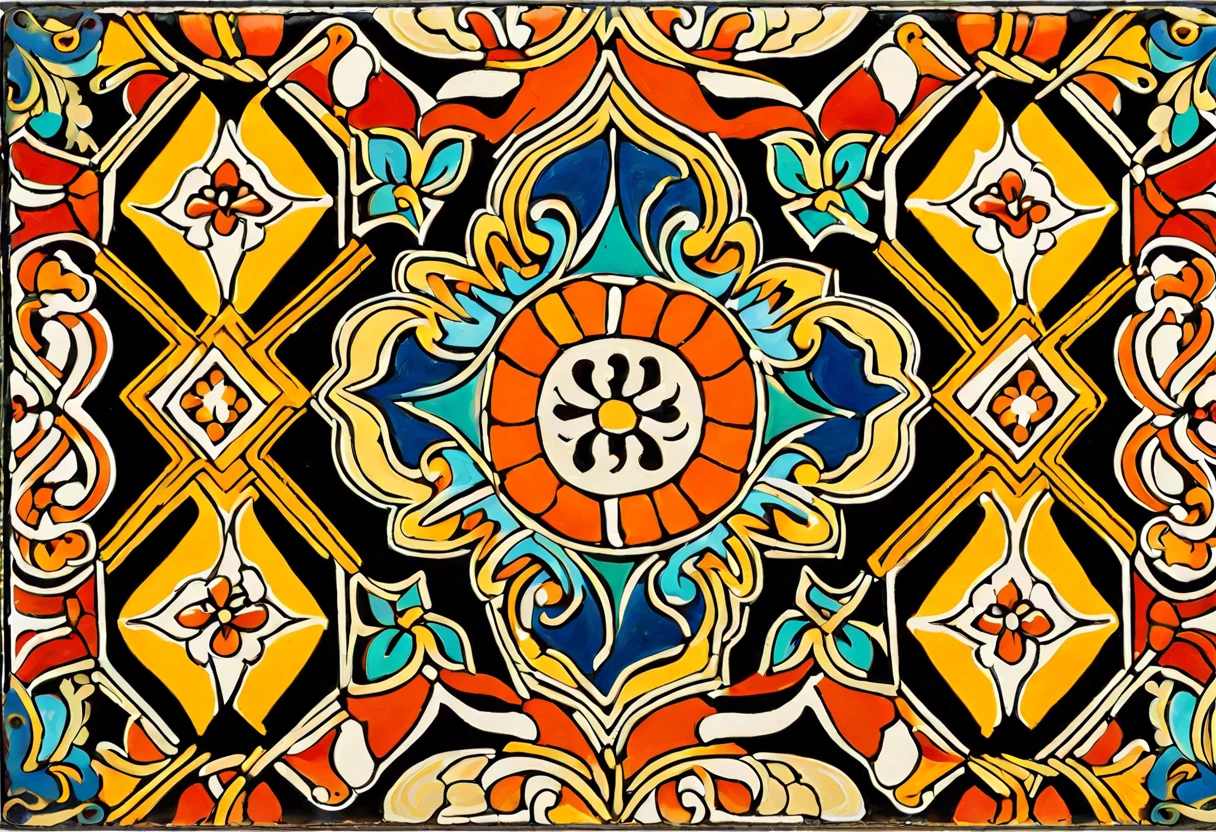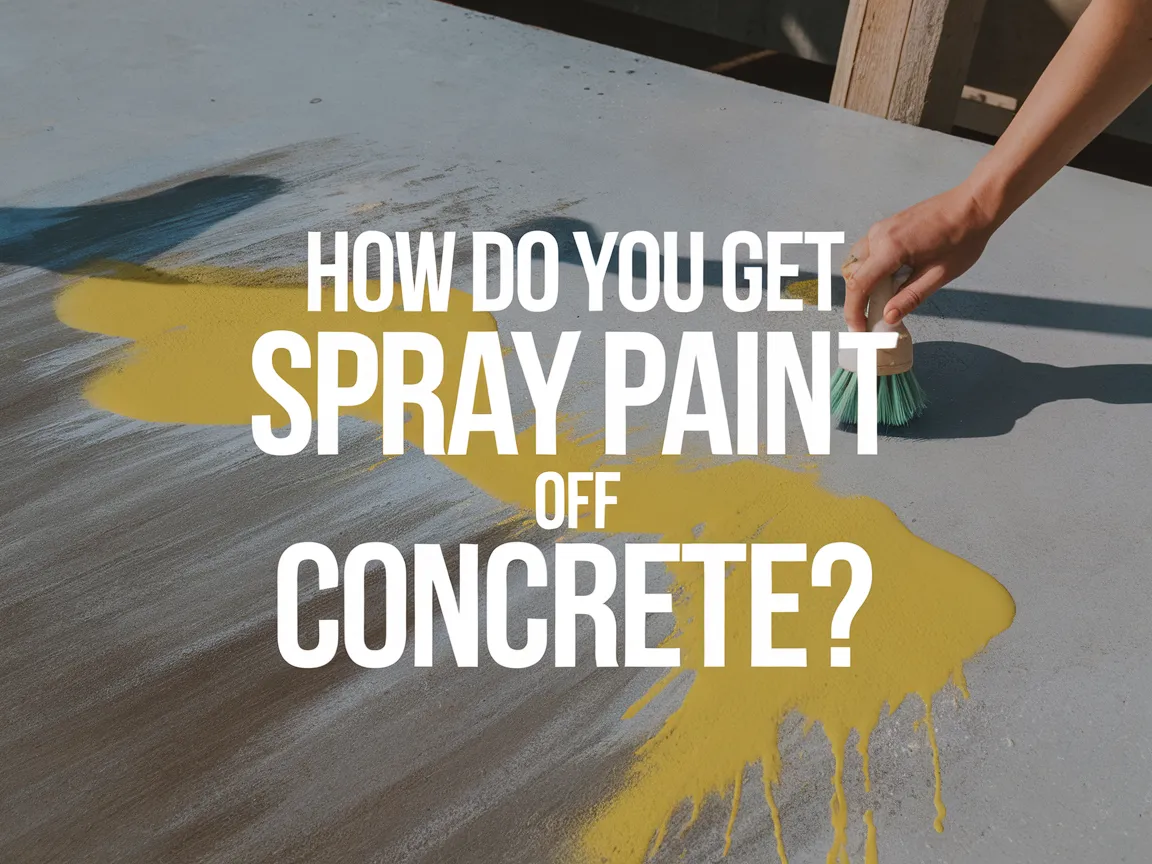Can You Paint Your Tile Floor?
Published on: May 14, 2025 | Last Updated: January 7, 2025
Written By: Sarah McClintock
A tile floor is a type of flooring made from small pieces of hard material, like ceramic or stone. It’s like a giant puzzle of little squares, perfect for dancing or playing.
So, can you paint your tile floor? It’s super important to know, as improper techniques can lead to an uneven mess that’s hard to fix. I remember when I first painted my tile floor; I made a few mistakes and learned a lot in the process.
In this guide, we’ll explore whether you can paint over glazed ceramic, get a step-by-step guide on how to paint ceramic tile floors, discuss different types of tile floors, and address common issues you might face. You’ll be equipped with methods to achieve a professional-looking result, along with creative DIY ideas!
Contents
- 1 Can You Paint Your Tile Floor?
- 2 What is a Tile Floor?
- 3 Essential Considerations Before You Start Painting Your Tile Floor
- 4 Step-by-step Guide to Painting Your Tile Floor
- 5 Different Types Of Tile Floors: Which Can You Paint?
- 6 Factors Affecting the Success Of Painting Your Tile Floor
- 7 Common Issues Encountered When Painting Tile Floors
- 8 Painting Techniques for Different Tile Surfaces
- 9 Cost Breakdown of Painting Your Tile Floor
- 10 Finishing Touches: Ensuring a Professional-looking Result
- 11 Maintenance After Painting Your Tile Floor
- 12 Paint Options for Tile Floors
- 13 Creative DIY Project Ideas for Painted Tile Floors
- 14 Frequently Asked Questions About Painting Tile Floors
- 15 Conclusion: Achieving a Beautiful and Functional Painted Tile Floor
- 16 Additional Resources
Can You Paint Your Tile Floor?
Yes, you can paint your tile floor. Use a good primer and tile-specific paint for best results. First, clean the surface thoroughly and let it dry. Follow up with a sealant to protect your newly painted floor. After painting, proper brush maintenance is crucial to preserve your painting tools, so clean your brushes carefully.
What is a Tile Floor?
A tile floor consists of durable, interlocking pieces made mainly from ceramic, porcelain, or natural stone. These tiles typically measure 15.24 cm (6 Inches) to 61 cm (24 Inches) square.
You might wonder if you can paint your tile floor; I’ve had firsthand experience with this. Painting tiles is tricky and requires the right preparation.
This knowledge came in handy when I needed to quickly refresh a space. I learned a lot about how paint adheres to ceramic tiles during a recent project. Understanding fractured surfaces and glazing (Shiny Coating) can improve your results. To successfully paint a ceramic tile floor, you must consider factors like preparation and technique to avoid frustration. If you’re wondering about adjusting paint consistency, you might want to learn how to modify paint mixture.
Essential Considerations Before You Start Painting Your Tile Floor
What do you need to prepare for?
- Tile Cleaner: Use a heavy-duty cleaner like ZEP Deep Clean. It removes dirt and grease from your tile, ensuring proper paint adhesion.
- Sandpaper: Get 220-grit sandpaper to smooth the tile surface. Sanding helps the paint stick better for a longer-lasting finish!
- Painter’s Tape: Use high-quality tape like FrogTape. It protects edges and gives you clean lines – nobody wants messy borders!
- Primer: A bonding primer like Bonder Filler is essential. It creates a stable base for the paint, especially on glazed ceramic surfaces.
That covers key factors to consider before painting your tile floor. Let’s now take a look at the step-by-step process.
Also See: Can Anodized Aluminum Be Painted? Quick Tips

Step-by-step Guide to Painting Your Tile Floor
Here are the steps to paint your tile floors and transform your space!
-
Clean and Prepare the Tile Surface
Start by cleaning your tile floor thoroughly. Use a degreaser and scrub brush to remove dirt, grease, or residue—this ensures a successful paint job.
Make sure your tiles are dry before proceeding. Moisture can ruin paint adhesion and lead to peeling later.
-
Apply Primer for Better Adhesion
Use a high-quality latex primer designed for tile if you’re painting over glazed ceramic or porcelain. Priming enhances adhesion and reduces the chances of chipping!
Roll on a thin, even coat of primer and let it dry completely—this typically takes 2-4 hours, depending on humidity. I’ve rushed it before and regretted it, so don’t skip this important step.
-
Choose and Apply the Paint
Select a paint suitable for flooring, like satin finish acrylic latex made for tile. For a more vibrant finish, consider paints designed for outdoor use, which are often more durable—perfect for high-traffic areas! Before applying your chosen paint, you’ll want to ensure a pristine surface by preparing painting materials correctly.
Apply your paint with a roller for even coverage. The first coat usually dries in 2-4 hours; add a second coat for depth! I learned the hard way that skipping this leads to uneven coloring.
-
Seal the Painted Surface
Once your paint is dry, seal it with a water-based polyacrylic for a lasting finish. A clear coat adds an extra layer of protection and ensures longevity.
Allow the sealer to cure according to the manufacturer’s instructions—this usually takes 72 hours before light use, so plan accordingly to avoid mishaps.
We covered a step-by-step guide for painting tile floors. We will now cover various types of tile floors suitable for painting.
Different Types Of Tile Floors: Which Can You Paint?
Let’s move on to types. We’ll cover ceramic, porcelain, vinyl, and natural stone.
-
Ceramic Tile
Ceramic tiles are made from clay and fired at high temperatures. You can paint a ceramic tile floor, but it requires proper priming to ensure the paint adheres well.
-
Porcelain Tile
Porcelain tiles are denser and less porous than ceramic, making them tougher. You can paint over porcelain tile floors, but surface preparation is critical for durable results.
-
Vinyl Tile
Vinyl tiles are flexible and water-resistant. It’s generally safe to paint vinyl floor tiles, especially with specially formulated paints.
-
Natural Stone Tile
Natural stone, like marble or slate, offers unique beauty but can be tricky. You can paint on glazed ceramic or natural stone tiles, but you’ll need specialized paints for durability.
I’d like to share what’s worked for me with ceramic tiles. With the right primer, I achieved vibrant, long-lasting results that truly rejuvenate the space.
We covered various tile floor types and their paintability. We will now cover factors influencing the successful painting of tile floors.
Factors Affecting the Success Of Painting Your Tile Floor
What factors influence your decision to paint that dated tile floor?
-
Tile Type: The surface material, such as glazed ceramic, significantly affects paint adhesion.
-
Preparation: Proper cleaning and priming before painting are essential for lasting results.
-
Paint Quality: High-quality floor paint ensures durability against wear and tear.
-
Environment: Humidity and temperature during application influence the paint’s drying time.
We have now covered factors influencing tile floor painting success. The next section addresses common challenges faced during the process.

Common Issues Encountered When Painting Tile Floors
My friend Kyle struggled with paint flaking off his tile floor. The tiles were shiny and glazed, making them not ideal for painting. He wasted time and money!
To fix it, he used a penetrating primer like Zinsser Bulls Eye, which seals glossy surfaces. Afterwards, a quality latex paint designed for floors worked like a charm. Keep the temperature at 60°F (15°C) for maximum durability! If you’re curious about painting different surfaces, exploring clay painting techniques can expand your creative skills.
Painting Techniques for Different Tile Surfaces
Different tile surfaces require different techniques for the best results. Knowing how to adapt your approach can make all the difference in your project!
Ceramic Tile Painting Techniques
Ceramic tiles are common and can look amazing when painted. Use a brush for detailed areas and a roller for larger sections. This combo helps you reach every nook and cranny.
Porcelain Tile Painting Techniques
With porcelain tiles, apply a bonding primer first. Then, use a paint sprayer for a smooth finish. This method helps avoid brush strokes and saves time!
Vinyl Tile Painting Techniques
For vinyl, use a thin coat of paint. A roller works great here, too. Just keep an eye on drying times since vinyl can trap moisture. Allow it to dry completely for the best finish.
Natural Stone Tile Painting Techniques
When painting natural stone tiles, select paints designed for stone. Apply with a sponge brush to avoid damaging the tile surface, and always follow up with a good sealant.
Cost Breakdown of Painting Your Tile Floor
Wanna know what you’ll spend? Here’s a simple cost breakdown for painting your tile floor:
| Item | Estimated Cost (USD) | Notes |
|---|---|---|
| Tile Cleaner | $10 – $20 | Proper cleaning is crucial! |
| Primer | $15 – $30 | High-quality for better adhesion. |
| Paint | $25 – $50 | Choose durable, tile-friendly paint. |
| Sealant | $15 – $30 | Protects your newly painted floor! |
| Tools & Accessories | $20 – $50 | Brushes, rollers, and tape add up. |
Finishing Touches: Ensuring a Professional-looking Result
After positioning your tile floor, allow 48 hours for the paint to cure completely. Keep furniture away for at least a week to prevent scratches.
Inspect every 1 inch (2.54 Cm) for chipped paint or surface wear. Use polyurethane sealants, like ZAR, for maintenance; this significantly prolongs your painted tile floor’s life.
If you’re experienced, apply a second coat with a high-density foam roller to reduce texture and improve durability. Focus on thin, even layers for a smoother finish.
Maintenance After Painting Your Tile Floor
After you’ve painted your tile floor, maintenance is key to keeping it looking fresh and vibrant.
- Regular Cleaning: Use a soft-bristle broom or vacuum to remove dirt. Avoid harsh chemicals. A mild soap mixed with warm water works wonders!
- Inspection: Periodically check for any wear or chipping. Early detection keeps repairs manageable.
- Resealing: Consider resealing your floor every 1-2 years with a suitable sealant to protect the paint.
- Furniture Placement: Use felt pads under furniture legs to prevent scratching your beautiful new paint.
Paint Options for Tile Floors
Not all paints are created equal! Different finishes and types can impact your results.
| Paint Type | Best For | Durability | Cost (Per Gallon) |
|---|---|---|---|
| Acrylic Latex | Ceramic and Porcelain | Moderate | $25 – $50 |
| Epoxy Paint | High-Traffic Areas | High | $50 – $75 |
| Chalk Paint | Low-Traffic Areas | Low | $20 – $40 |
| Specialty Tile Paint | Glazed Surfaces | High | $30 – $60 |
Creative DIY Project Ideas for Painted Tile Floors
How about transforming your tired tile floor into a vibrant masterpiece? You could create a bold geometric pattern or even replicate an intricate Moroccan design – it’s out-of-the-box and super fun! If you’re looking to extend your creative renovation beyond the floor, you might want to explore painting your bathroom sink to complete the makeover.
For these projects, I’d grab some high-quality tile paint, a stencil (Or Two), and a sponge applicator. Expect to spend around $50-$100 and set aside a weekend or two for a stunning result!
If you’re asking, “can you paint your tile floor?” consider this: why not use peel-and-stick tiles for a fresh look instead? I’ve done it with my basement floor, and it’s a game changer – quick, easy, and absolutely striking! When you’re ready to tackle your tile transformation, proper equipment maintenance is crucial to ensure a smooth and professional finish.
Frequently Asked Questions About Painting Tile Floors
Is It Advisable to Paint Ceramic Tile Floors?
Yes, it is advisable to paint ceramic tile floors. Painting offers a budget-friendly option for homeowners looking to refresh their floors without a full remodel.
How Long Will Painted Tile Floors Last?
Painted tile floors can last up to 5 years with proper care. Regular maintenance ensures durability and prolongs the finish, making it worth considering.
Can I Paint Over Existing Tile Without Primer?
No, you can’t paint over existing tile without primer. Primer improves adhesion, resulting in a better finish and reducing the chance of paint chipping.
What Type Of Paint is Best for Tiles?
Acrylic latex paint is the best type for tiles. It’s flexible, water-resistant, and offers good adhesion—ideal for flooring solutions.
How Can I Maintain My Painted Tile Floors?
You can maintain your painted tile floors by sweeping regularly and using mild cleaning solutions. This simple care routine prevents damage and keeps them looking brand new.
How Do You Remove Paint From Ceramic Tiles?
You can remove paint from ceramic tiles using a paint stripper or solvent. Both methods require care to avoid damaging the tile underneath.
What Preparation is Needed Before Painting Tile Floors?
Before painting tile floors, clean thoroughly and lightly sand the surface. Surface preparation increases adhesion, which is critical for the longevity of the paint.
Can I Use Epoxy Paint on Tiles?
Yes, you can use epoxy paint on tiles. Epoxy provides a durable finish, but its application requires specific steps and a well-prepped surface.
Also See: Can You Paint Styrofoam? Tips for a Great Finish!
Conclusion: Achieving a Beautiful and Functional Painted Tile Floor
We covered essential aspects like understanding tile floors, considerations before painting, a step-by-step painting guide, recommended color palettes, types of tile floors you can paint, factors affecting success, common issues, finishing touches, and creative DIY ideas.
You can certainly explore tile floor painting techniques. With the right preparation, tools, and methods, you can achieve a durable finish. For any further support with your painting projects, feel free to reach out.
For more comprehensive guides and tutorials, visit Paint Answers.
Additional Resources
- Smith, R. (2003). The Artist’s Handbook of Materials and Techniques (5th ed.). New York, NY: Knopf.
- Can you paint tile? Does it last? | The DIY Mommy
- r/paint on Reddit: Has anyone painted tile floors?




